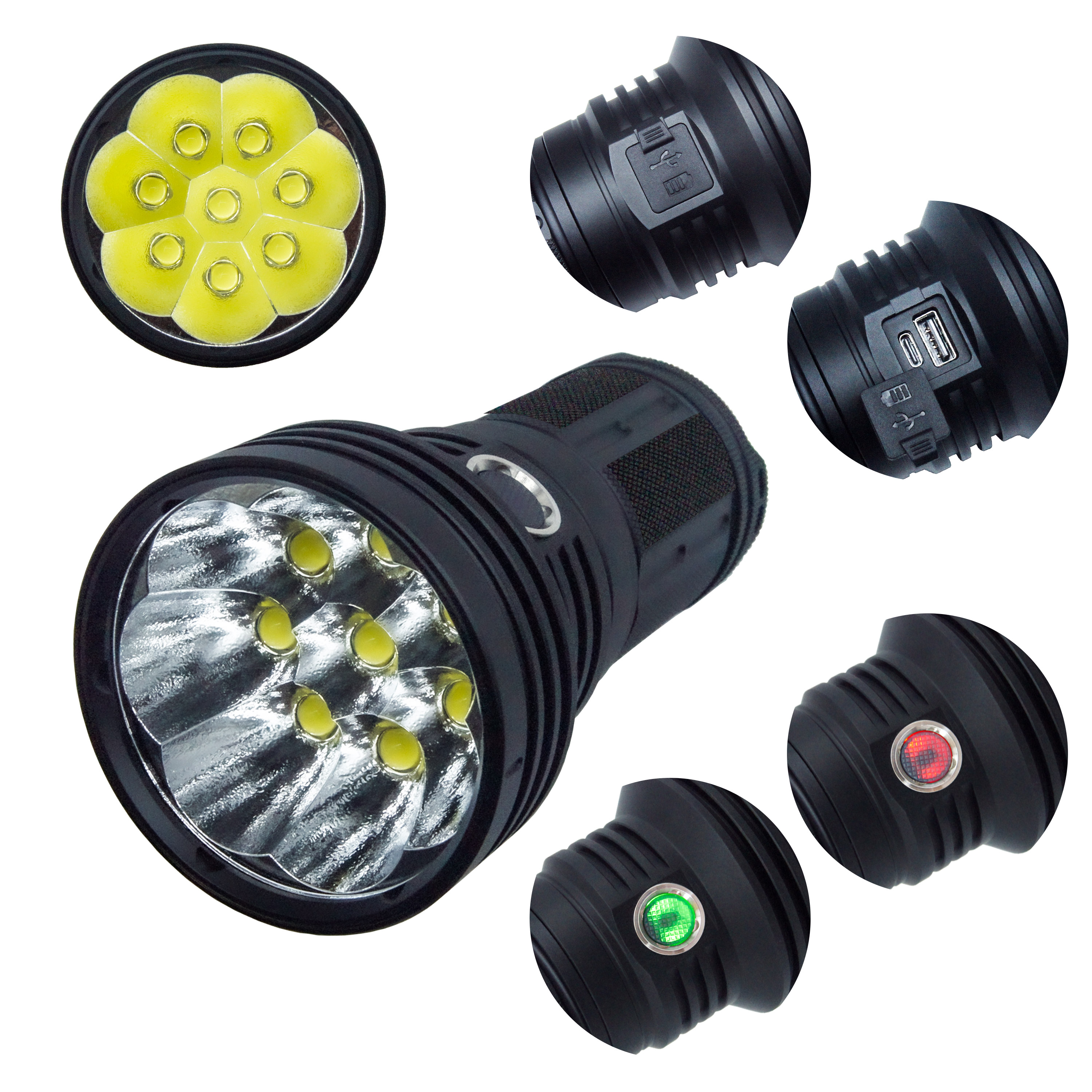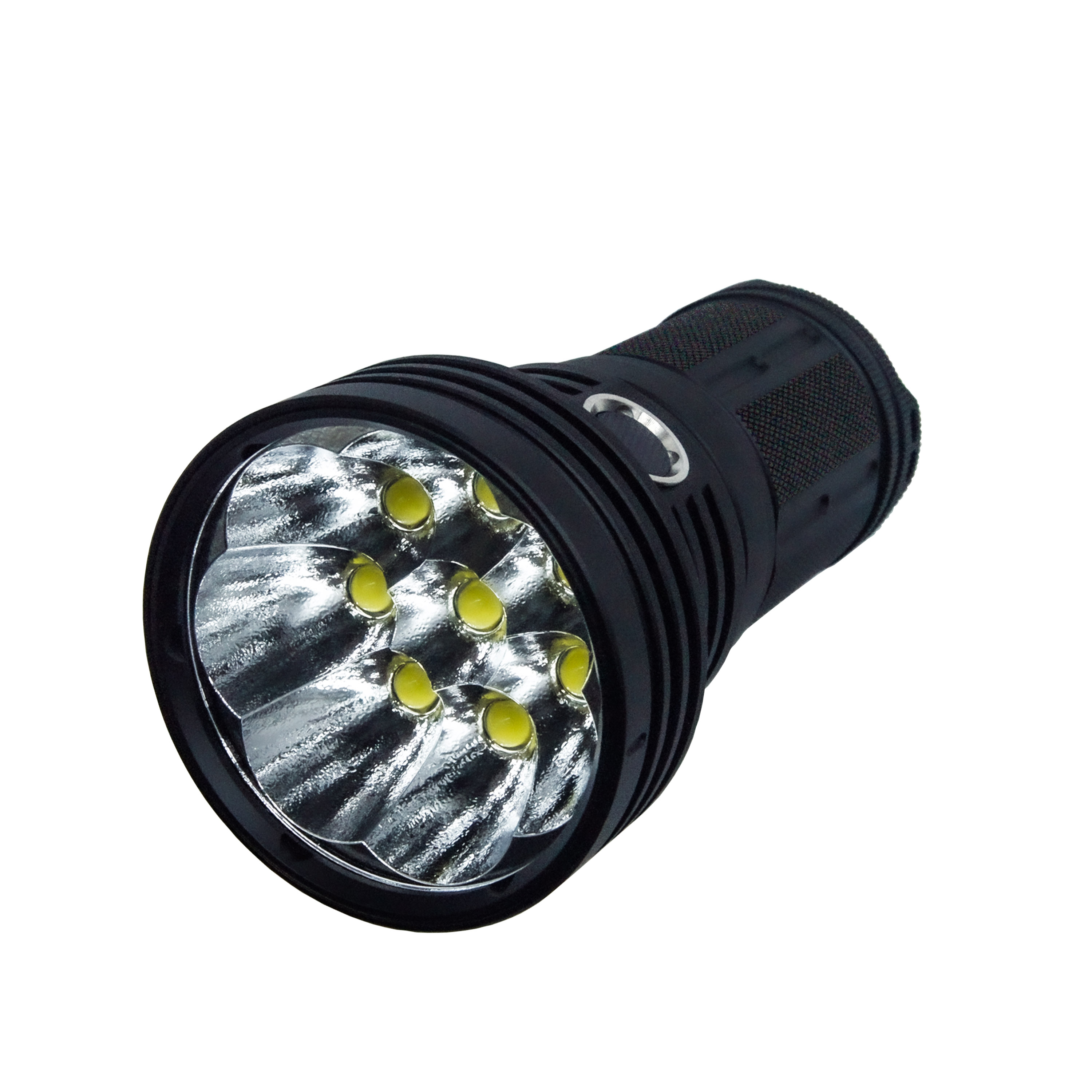Best flashlights for car emergency kits

Imagine your car breaks down on a remote road at night. You need to check under the hood, but it’s pitch dark. This is where a reliable flashlight becomes your best friend. Flashlights are essential for car emergency kits because they help you stay safe in situations like breakdowns, power outages, or navigating dimly lit areas. Whether it’s a compact handheld model, a lantern for broader light, or a headlamp for hands-free use, the right flashlight can make all the difference.
Key Takeaways
Pick a flashlight with 100 to 500 lumens for good brightness. This amount helps you see well in the dark.
Use rechargeable batteries to save money and cut down waste. They last longer and give steady power compared to disposable ones.
Keep your flashlight in a cool, easy-to-find place in your car. Don’t use the glove box to avoid heat ruining the batteries.
Key features of the best flashlight for car emergencies

When choosing the best flashlight for your car emergency kit, you need to focus on a few key features. These features ensure the flashlight performs well when you need it most. Let’s break them down.
Brightness and lumens
Brightness is one of the most important factors in a flashlight. It’s measured in lumens, which tell you how much light the flashlight produces. For car emergencies, a flashlight with 100 to 500 lumens is ideal. This range provides enough light to illuminate your surroundings and keep you safe. If you’re looking for something more versatile, some flashlights go up to 7000 lumens for broader use. Here’s a quick guide:
Flashlight Type | Lumen Output Range |
|---|---|
General Use | 100 - 7000 lumens |
Max Output | 5 - 570 lumens |
A brighter flashlight ensures better visibility, especially in dark or hazardous conditions. Whether you’re checking under the hood or signaling for help, the right brightness makes all the difference.
Battery type and runtime
The type of battery and its runtime can significantly impact your flashlight’s reliability. Rechargeable batteries are a great choice for emergency kits. They save money over time, offer longer lifespans, and reduce waste. Plus, they’re better for high-drain devices like flashlights. Here are some benefits of rechargeable batteries:
They cost less in the long run compared to disposable batteries.
They provide consistent power flow, unlike alkaline batteries.
They’re environmentally friendly since they reduce waste.
For emergencies, you’ll want a flashlight with a long battery life. This ensures it won’t fail you during extended use.
Durability and weather resistance
A flashlight with high build quality is essential for tough conditions. Look for materials like aluminum or reinforced polymer, which are durable and impact-resistant. Here’s a quick comparison of durable materials:
Material | Durability Features |
|---|---|
Aluminum | Tough, impact-resistant, handles drops and rough use. |
Reinforced Polymer | Withstands drops and rough handling, impact resistant. |
Water resistance is another must-have feature. Flashlights with an IPX7 or IPX8 waterproof rating can handle heavy rain or even submersion. This makes them reliable in snow, rain, or other harsh weather conditions.
Additional functionalities (e.g., magnetic base, strobe mode, USB charging)
Extra features can make a flashlight even more useful. A magnetic base lets you attach it to your car while working hands-free. Strobe mode can signal for help in emergencies. USB charging is another handy feature, especially for rechargeable batteries. Here’s a breakdown of useful functionalities:
Functionality | Importance |
|---|---|
Brightness and Beam Distance | Higher lumens (100-500+) provide better visibility; longer beam distance aids in searching areas. |
Battery Life and Power Source | Reliable battery life is crucial; consider rechargeable options for prolonged outages. |
Durability and Weather Resistance | Rugged construction and weather resistance ensure performance in harsh conditions. |
Size and Portability | Compact models are easier to carry; multi-functional options add versatility. |
Ease of Use | User-friendly designs and intuitive controls are essential during emergencies. |
When you’re picking the best flashlight for your car, these features ensure you’re prepared for any situation. Whether it’s the best lantern for in your car or the best headlamp for in your car, these details will guide you to the right choice.
Top flashlight recommendations for emergency kits

When it comes to choosing the best flashlight for car emergencies, you’ve got plenty of great options. Whether you need a standard flashlight, a lantern, or a headlamp, there’s something for every situation. Let’s dive into some top picks.
Best standard flashlight for car emergencies (e.g., Surefire G2 Pro)
The Surefire G2 Pro is a solid choice for your car emergency kit. It’s compact, durable, and packs a punch with its dual-output LED. You can switch between 15 lumens for small tasks and 600 lumens for maximum visibility. Its tough polymer body resists corrosion, and the waterproof design ensures it works in any weather. Plus, it’s powered by high-energy 123A batteries with a 10-year shelf life, so you won’t have to worry about it failing when you need it most.
Feature | Description |
|---|---|
Dual-output LED | 15 lumens for small tasks; 600 lumens for emergencies. |
Durability | Lightweight polymer body resists corrosion and wear. |
Waterproof | O-ring and gasket sealed for reliable performance in wet conditions. |
Battery Life | 1.5 hours on high; 52 hours on low. |
Compact Size | 5.2 inches long, perfect for glove box storage. |
This flashlight’s high build quality and versatility make it a must-have for emergencies.
Best lantern for emergency kits (e.g., ThruNite TN12 Pro)
If you need broader illumination, the ThruNite TN12 Pro is a fantastic lantern-style flashlight. It offers up to 1,900 lumens of brightness, lighting up large areas with ease. Its rechargeable battery ensures you’re always ready, and the USB-C charging port makes recharging quick and convenient. The TN12 Pro is also built to last, with an aluminum body that’s impact-resistant and waterproof. Whether you’re changing a tire or camping, this lantern has you covered.
Best headlamp for hands-free use (e.g., Armytek Wizard C2 PRO)
For hands-free tasks, the Armytek Wizard C2 PRO is a game-changer. This headlamp delivers impressive brightness, extended runtimes, and a comfortable fit. Its magnetic tailcap lets you attach it to metal surfaces, freeing up your hands for other tasks. Whether you’re inspecting your engine or signaling for help, this headlamp ensures you can focus on the job without holding a flashlight.
Budget-friendly flashlight options for car emergency kits
You don’t have to break the bank to get a reliable emergency flashlight. Here are some affordable yet dependable options:
Flashlight Model | Max Output | Features | Battery Configuration |
|---|---|---|---|
Sofirn BLF LT1 | 5 - 570 lumens | Rechargeable, 360-degree lantern | 1-4*18650 |
Armytek Wizard C2 PRO | 0.03 - 2000 lumens | USB rechargeable, magnetic tailcap | 1*18650 |
Olight Marauder Mini | 100 - 7000 lumens | Rechargeable via magnetic USB | 1*32650 |
These options combine affordability with reliability, ensuring you’re prepared for any emergency without overspending.
Storage and maintenance tips for flashlights
Best places to store a flashlight in your car
Keeping your flashlight in the right spot ensures it’s always ready when you need it. Here are some tips for choosing the best storage locations:
Avoid the glove compartment. The heat inside can damage the batteries and shorten their lifespan.
Store it under the seat. This area stays cooler and protects the flashlight from extreme temperatures.
Pick a designated, easy-to-reach spot. This prevents misplacement and ensures quick access during emergencies.
Make sure the flashlight is in a secure location where it won’t get damaged or roll around.
By following these tips, you’ll always know where your flashlight is, and it’ll stay in good condition.
Battery care and replacement tips
Proper battery care is essential for keeping your flashlight reliable. Extreme heat can cause batteries to self-discharge faster, corrode, or even leak. Rechargeable batteries, like 18650s, also don’t perform well in high temperatures. To avoid these issues, store your flashlight in a cool spot and check the batteries regularly.
Replace the batteries if you notice any of these signs:
The flashlight drains quickly.
The light flickers or becomes dim.
You see corrosion on the battery terminals.
For best results, replace batteries every 2-3 months if the flashlight is used regularly. For rarely used flashlights, change them every 4 months to ensure readiness.
User Experience | Frequency of Battery Change |
|---|---|
Regular Use | Every 2-3 months |
Rarely Used | Every 4 months |
Taking care of your batteries will extend their life and keep your flashlight ready for emergencies.
Regular checks to ensure flashlight readiness
A flashlight is only helpful if it works when you need it. Make it a habit to check your flashlight every month. Test the brightness to ensure it’s strong enough for emergencies. Inspect the batteries for any signs of corrosion or leakage. If you’re using a rechargeable battery, confirm it’s fully charged.
You should also check the flashlight’s physical condition. Look for cracks, dents, or other damage that could affect its performance. A flashlight with high build quality will last longer, but regular checks will help you catch any issues early.
By staying proactive, you’ll always have a reliable flashlight in your emergency kits.
Equipping your emergency kits with the best flashlight is a simple yet crucial step for staying safe. A reliable flashlight with proper brightness, durability, and ease of use ensures you’re prepared for any situation. Prioritize safety by choosing a model that’s portable, weather-resistant, and easy to store in your car.
FAQ
What type of flashlight is best for car emergencies?
Choose a durable flashlight with adjustable brightness, long battery life, and weather resistance. A compact design ensures easy storage in your car.
How often should I check my flashlight?
Test your flashlight monthly. Check the brightness, battery charge, and physical condition to ensure it’s ready for emergencies.
Can I use a rechargeable flashlight for emergencies?
Yes, rechargeable flashlights are great. They save money, reduce waste, and provide consistent power. Just ensure it’s fully charged before storing it.
See Also
A Homeowner's Guide to Selecting the Ideal Emergency Flashlight
Hand-Cranked Flashlights: Essential Versatile Tools for Emergencies
Discover Your Ideal Flashlight for Daily Use
Essential LED Flashlights for Home: A Convenient Necessity
SF1 Camping Flashlight: Brighten Up Your Outdoor Experiences
